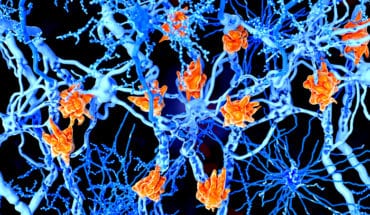“Every year doctors, in the UK, have to deal with 150,000 cases of sepsis, resulting in around 44,000 deaths. This condition (also known as the silent killer) occurs when the immune system becomes overactive during an infection, often of a minor nature, causing damage to the body itself. Early symptoms of sepsis may include fast breathing or a fast heartbeat, high or low temperature, chills and shivering, and people may or may not have a fever. Severe symptoms can develop soon after, when blood pressure becomes very low, leading to dizziness, disorientation, slurred speech, mottled skin, nausea and vomiting. Without quick treatment, sepsis can lead to organ failure and death.
I chair a group that has developed the new guideline for the National Institute for Health and Care Excellence (NICE). This aims to put across the message to doctors and health professionals that they should treat people who show signs of sepsis with the same urgency given to those who complain of chest pain that might be a heart attack. Anyone can succumb to sepsis. It can come on as the result of a minor injury or infection that the body is trying to recover from and the immune system goes into overdrive. Sepsis can be difficult to diagnose with certainty. We want clinicians to start asking ‘could this be sepsis?’ much earlier on so they can rule it out or get people the treatment they need. The thinking should be similar to considering that chest pain could be heart related. Just like most people with chest pain are not having a heart attack, the majority of people with an infection will not have sepsis. But if it isn’t considered then the diagnosis can be missed.
A report by the National Confidential Enquiry into Patient Outcome and Death published last year revealed delays in identifying sepsis in over a third (36 per cent) of cases. Health professionals therefore need to think about the possibility of sepsis in all patients who may have an infection. One of my colleagues Professor Mark Baker, director of the NICE Centre for Guidelines says: “Once identified, sepsis can be treated very quickly and people are more likely to make a full recovery. We know that when hospitals are well prepared, clinicians do better at responding to patients with sepsis. However recent reports have revealed that many hospitals have no formal protocols for recognising and responding to sepsis.”
If there is any delay in spotting the signs we will fail patients by leaving them with debilitating problems, or in the worst cases people will die. This guideline will be the first to provide advice based on the best available evidence on how to quickly identify and treat people with sepsis. Another colleague, Dr Ron Daniels, chief executive of the UK Sepsis Trust comments: “Sepsis is a condition whose time has come. We must act decisively to save many of the thousands of lives claimed every year. The UK Sepsis Trust exists to drive improved outcomes in sepsis and, as the only charity combining clinical leadership with support for those affected by sepsis, we welcome this new guideline as a unique and significant opportunity to effect change across the UK and beyond. Our revised clinical tools, together with this important guideline, provide the most cohesive national strategy to prevent deaths from sepsis in the world.”
The NICE guideline includes recommendations to help health professionals working in any NHS setting recognise sepsis as soon as possible. Signs and symptoms are presented in clear tables to help clinicians assess each person’s risk based on their age and where they are being treated. People at high-risk of severe illness from sepsis in primary care should be referred by ambulance to hospital. Once in hospital they should be seen by a senior doctor or nurse straightaway who can start treatment.”
The UK Sepsis Trust worked with NICE to update its range of clinical toolkits in line with the NICE guideline.






